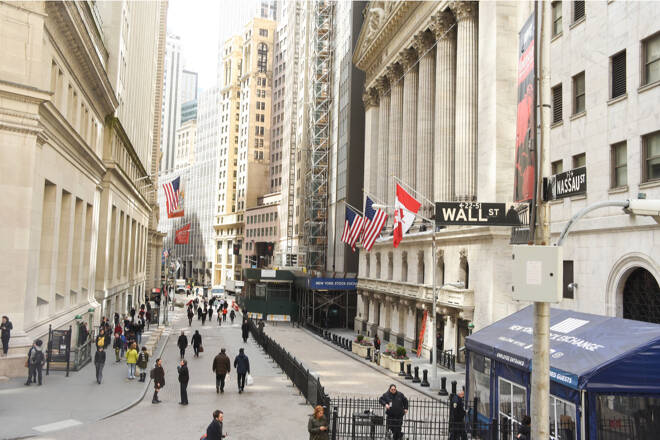Advertisement
Advertisement
S&P 500, NASDAQ Composite Testing Session Lows on Recession Fears
By:
The S&P 500 and NASDAQ Composite were pressured by hawkish comments from Fed officials, which fueled concerns over recession.
The major U.S. stock indexes are testing their intraday lows at the mid-session on Friday. The catalyst behind the weakness is growing fears that the Federal Reserve’s mission to tame inflation would lead the economy into a recession in 2023. Today’s weakness has put the equity markets in a position to post a third session of losses and a second straight week of declines.
At 17:31, the blue chip Dow Jones Industrial Average is at 32739.86, down 462.36 or -1.39%. The benchmark S&P 500 is trading 3836.36, down 59.39 or -1.52% and the tech-weighted NASDAQ Composite is at 10667.02, down 143.51 or 1.33%.
Traders Sell Responding to Fed Projections
U.S. stock markets have been under pressure since comments from Fed Chair Jerome Powell on Wednesday signaled more policy tightening. Additional selling was fueled by policymaker projections that pointed toward interest rates eventually topping over 5% in 2023, a level not seen in 15 years. The Fed also raised its benchmark interest rate 50 basis points as expected. Although it represented a slight easing from the previous four-consecutive 75 basis point rate hikes.
Economic Contraction Leads to More Selling
After a weaker opening, U.S. stocks fell further after a report showed U.S. business activity contracted further in December. The report showed new orders slumped to the lowest level in just over 2-1/2 years, but softening demand helped to significantly cool inflation, Reuters reported.
The survey’s flash manufacturing PMI dropped to a 31-month low and flash services sector PMI also fell. Both came in under 50 which signals contraction.
Hawkish Fed Speakers Encourage More Selling
Stocks were also pressured by hawkish comments from Fed officials, which fueled concerns over recession.
New York Fed President John Williams said on Friday it remains possible the U.S. central bank will raise rates more than it expects next year. The policymaker added that he does not anticipate a recession due to the Fed’s aggressive tightening.
In addition, San Francisco Federal Reserve Bank President Mary Daly said it is “reasonable” to believe that once the Fed’s policy rates reached their peak, they could stay there into 2024.
Short-Term Outlook
In my opinion, sentiment took a real turn last Wednesday when Federal Reserve Chairman Jerome Powell came out firing about the need for additional rate hikes. It seems that all the optimism that had been building since October has been taken away in just three days.
For months traders have been saying that bad news is actually good news. This is because it indicates the Fed’s rate hikes are working to slow down the economy. But now it looks as if bad news is really bad news and that the economy is head toward recession.
For a look at all of today’s economic events, check out our economic calendar.
About the Author
James Hyerczykauthor
James Hyerczyk is a U.S. based seasoned technical analyst and educator with over 40 years of experience in market analysis and trading, specializing in chart patterns and price movement. He is the author of two books on technical analysis and has a background in both futures and stock markets.
Did you find this article useful?
Latest news and analysis
Advertisement
